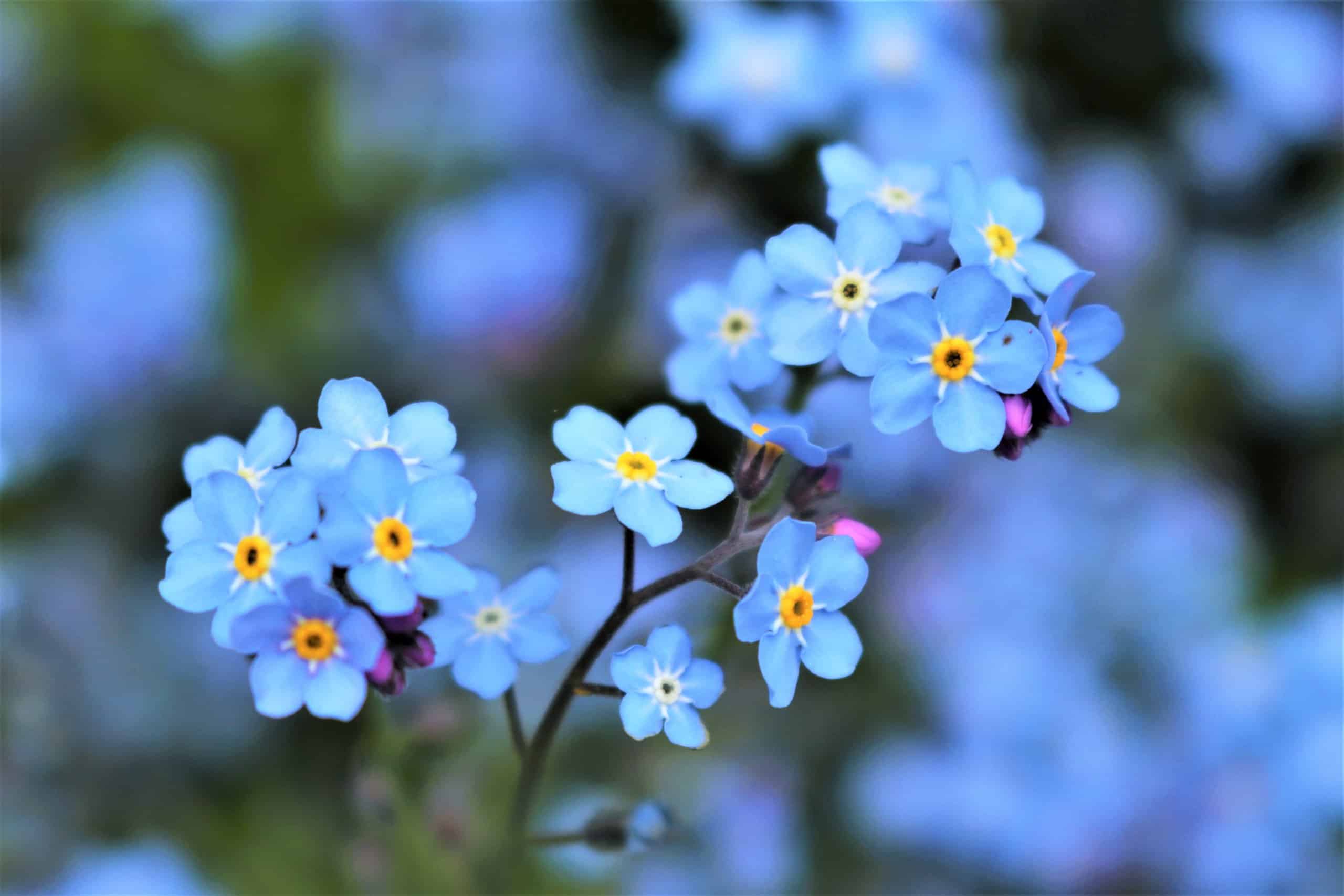Also known as scorpion grass, the actual name of forget-me-nots is Myosotis, which means “mouse’s ear” in Greek. These white, pink, or blue flowers have become common sights at funerals and war memorials. Almost every kind of flower has its own symbolism, meaning, and appropriate use. This is especially true for forget-me-nots. So, we created this list of the meaning and symbolism of forget-me-nots.
However, even if you’re not an expert with flowers, knowing when are where to include this small, yet beautiful flower, can have a big impact on a lot of people. No amount of consideration is too much when it comes to the occasions where myosotis is involved!
Where Did the Name Come From?

Forget-me-nots with their iconic pale blue color. They are some of the loveliest blue flowers of spring.
©Shulevskyy Volodymyr/Shutterstock.com
The popular name for the Myosotis flower comes from a European folk tale of a medieval knight and his beloved. According to the story, the knight wanted to give a gift to his lady, and bent down next to a river to pick a Myosotis to present to her. Due to the weight of his armor, he fell into the river and was carried away, never to be seen again. As he was floating, however, he called back to his lady, “Forget me not!”, and the flower has retained this name and the meaning of enduring love and remembrance.
Some believe that after the Battle of Waterloo, forget-me-nots bloomed in the fields and hills where the soldiers died. This strengthened the symbolism and meaning of love and loss for the flower.
There are many less well-known origin stories for the forget-me-not, particularly in Western Christian traditions.
One story says that when God was giving all the flowers their colors, He forgot about this little blossom. The flower called out “Forget me not!”, but God only had a little bit of blue left over. He gave it to the flower for which the forget-me-not was eternally grateful. This explains why their blossoms are so pale and often change color between blue and white and pink.
There might be other stories about the origin and naming of this flower in your area. We encourage you to learn them!
The Meaning and Symbolism of Forget-Me-Nots
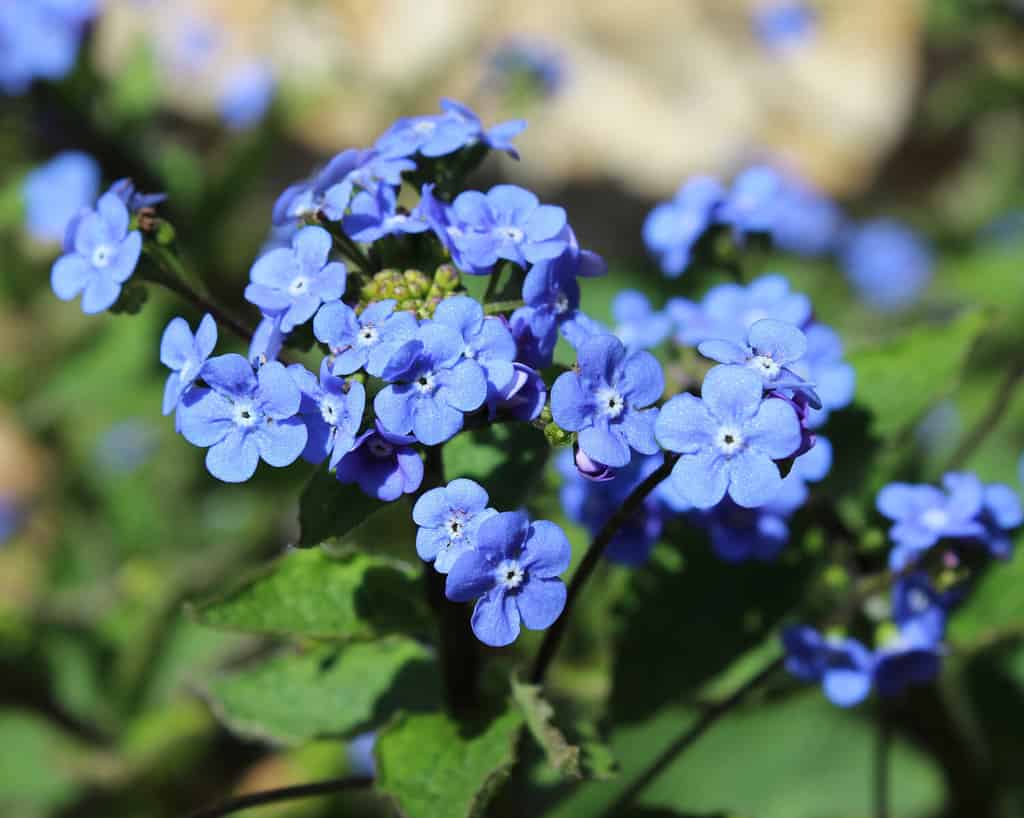
These small flowers fall off after blooming, and are usually given attached to their stem.
©Imladris/Shutterstock.com
So what are the meaning and symbolism of forget-me-nots? These unassuming, pale flowers symbolize fidelity, memory, resilience, humility, faithful love, remembrance, and loyalty.
Many people take the symbolism of flowers very seriously, not just florists! Giving someone a forget-me-not implies that you are asking them to not forget you, or to remember you always. Additionally, giving this flower to someone who recently lost a loved one can imply sympathetic suffering or a promise of remembrance of that loved one.
It is common to find these flowers growing in swampy or marshy areas. So, streams, ponds, and small lakes are usually where you will find them. This tendency to grow in harsh, smelly, and precarious areas lends a sense of the resiliency of love and memory to the flower.
Some believe that if two lovers exchange bouquets of forget-me-nots, they will eventually be reunited, no matter what.
Common Uses of Forget-Me-Nots
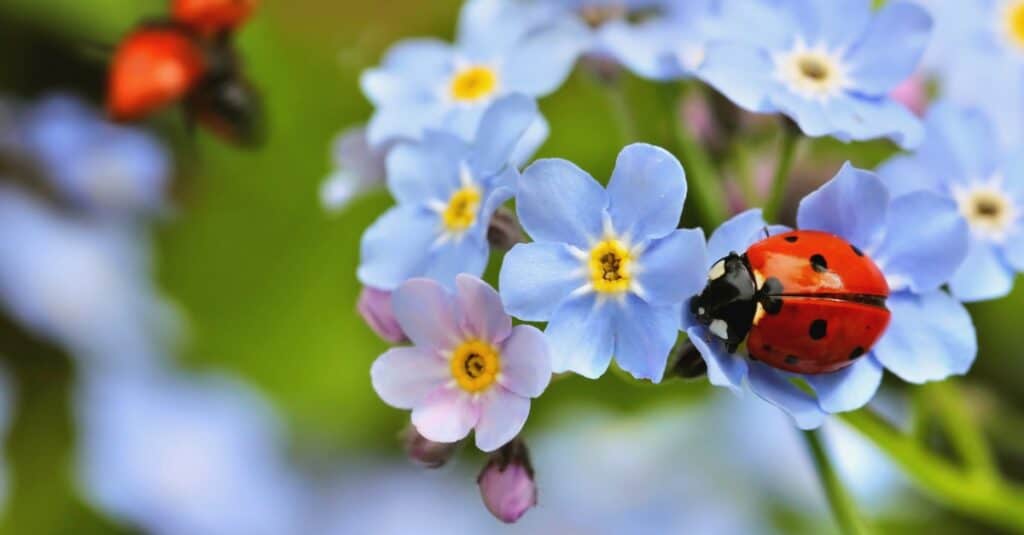
Many insects enjoy the taste of Forget-me-nots. These include butterflies and ladybugs!
©Marek Mierzejewski/Shutterstock.com
The people of Newfoundland wear the flower around July 1 every year to commemorate those who were killed during World War 1. People in Germany use it to commemorate those who fell in either of the world wars, regardless of who they fought for. This practice is very similar to how the British use red poppies for the same purpose.
Lithuanians use the flower to remember those who died during the violent conflicts of January 1991. People in the Netherlands and New Zealand use it as a symbol of support and awareness for those suffering from dementia or Alzheimer’s.
Throughout its history, regardless of its name or folk background, the forget-me-not has been used a lot in art to remember those who died. Poems, paintings, illustrations, and more all include this pale blue or pink flower as a symbol of loss and yearning. That use continues to this day. Professional florists will incorporate forget-me-nots into arrangements associated with funerals or memorials, and giving forget-me-nots to someone who is grieving is definitely appropriate.
Princess Diana, the popular British royalty, preferred forget-me-nots. So, in keeping with its meaning and her affection for the flower, many of them were planted in London’s Kensington Palace in her honor.
Magical Attributes of Forget-Me-Nots
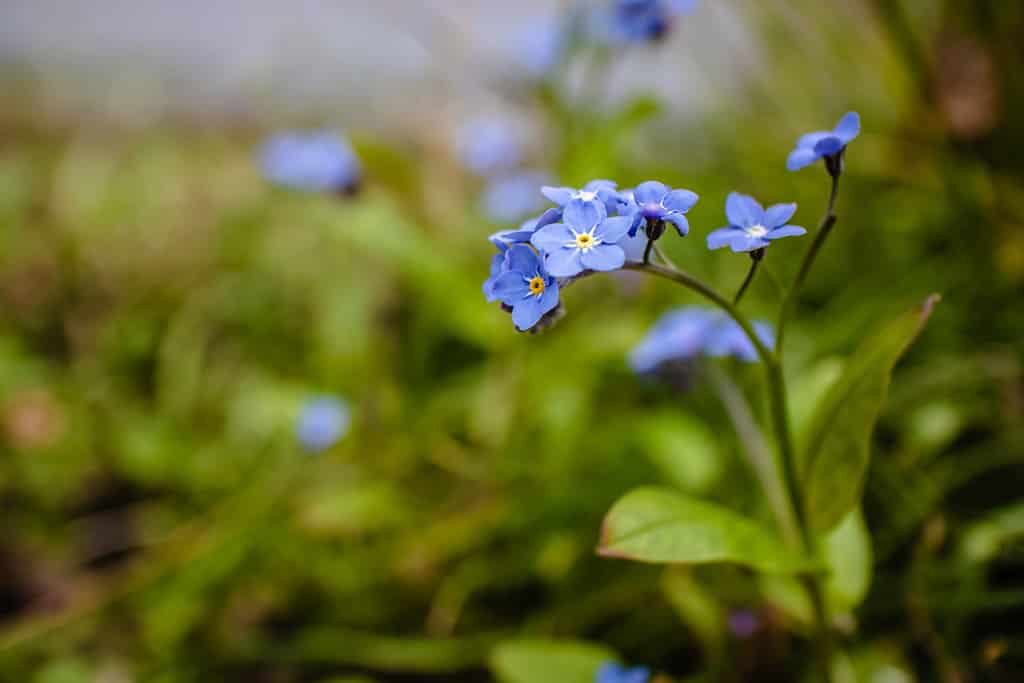
There are different varieties of forget-me-nots. This is an Alpine forget-me-not.
©Oakland Images/Shutterstock.com
In some circles, forget-me-nots carry certain traits and energies that make them useful in magic, spells, and potions. This flower is associated with female energy, the moon, and the Earth.
Those who practice witchcraft believe that forget-me-nots can be used in binding magic. They say that wearing a flower can draw people to you. If you meditate or include a forget-me-not in a spell, then give that flower to another person, you will continue to be in that person’s dreams and thoughts for as long as the flower lives.
Those who practice color magic include this flower to represent healing and peace in their spells.
To a lesser extent, forget-me-nots can symbolize luck and protection. Some people even carry one of these blossoms at all times as a good luck charm. Others believe that these little flowers have the power to protect people from witches and witchcraft.
They also symbolize protection and luck, and it’s believed that they have the power to protect humans against bad witches.
How To Use Forget-Me-Nots
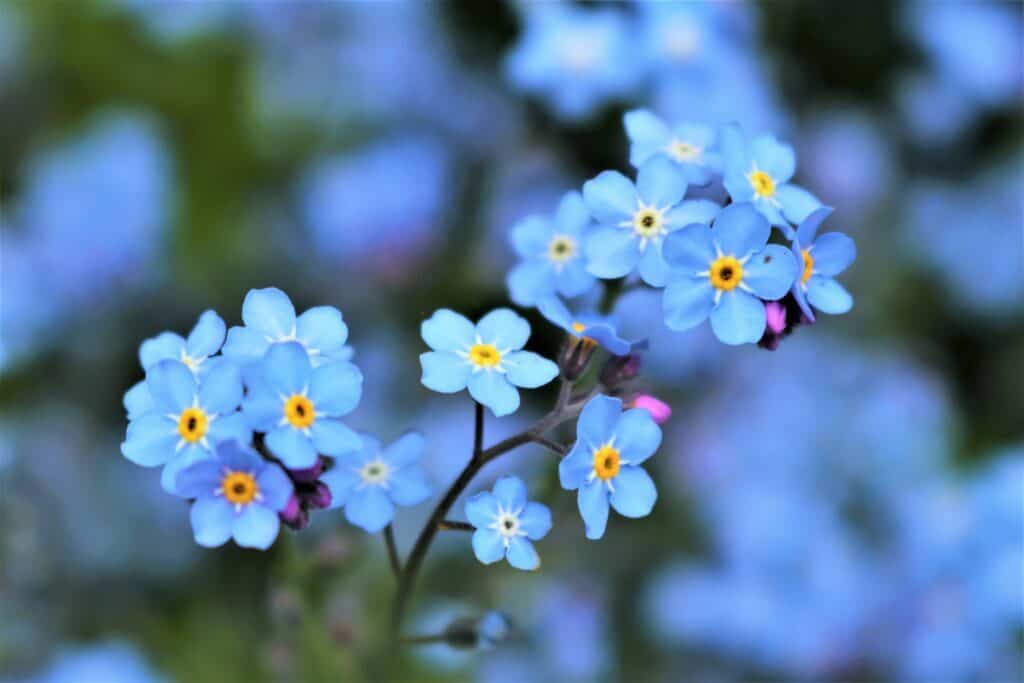
Forget-me-not flower blooms do not last long, but they are a happy addition to any garden bed.
©iStock.com/Agnieszka Klimaszewska
Because the meaning and symbolism of forget-me-nots, this beautiful flower can be a popular addition to any bouquet, home garden, or other arrangement.
It is entirely appropriate to give a bouquet of just forget-me-nots. Many flower and grocery stores will guilt you into purchasing more common (and expensive) flower arrangements. Most of these arrangements will be devoid of any heartfelt message or meaning. A simple forget-me-not bouquet, on the other hand, communicates dedication, love, and enduring faithfulness which will always mean more than roses.
Forget-me-nots are the flower of September. Next time you bring a gift for someone on their September birthday, consider including a few of these unassuming flowers.
Forget-me-nots don’t have a scent, either. So, if you are afraid of a flowery smell throwing off your home aroma, don’t worry! You can grow as many of them as you want in home pots and they will not overpower any other flowers or candles you have.
Important Information About Forget-Me-Nots

Growing forget-me-nots at home is easy and simple. A great option for young gardeners.
©iStock.com/Nadtochiy
There are many folk and home recipes that include forget-me-nots in their ingredients. Some of these remedies include treating scorpion stings, coughs, and lung diseases. We recommend against using them for anything, however! These pretty flowers are actually poisonous and may cause liver damage.
Before including this flower in any recipe, please check with an expert in your area!
When growing these flowers at home, make sure their soil is always moist and protected from more invasive species. They don’t require much sunlight and are generally easy to grow, especially inside. In fact, because these flowers are so easy to grow, they are actually considered an invasive species in many places. Professional gardeners recommend you “deadhead” your forget-me-nots to prevent them from outgrowing your pots. This also encourages the plant to produce more blossoms for each stem. Don’t be surprised when their iconic blooms change color!
Thank you for reading! Have some feedback for us? Contact the AZ Animals editorial team.

